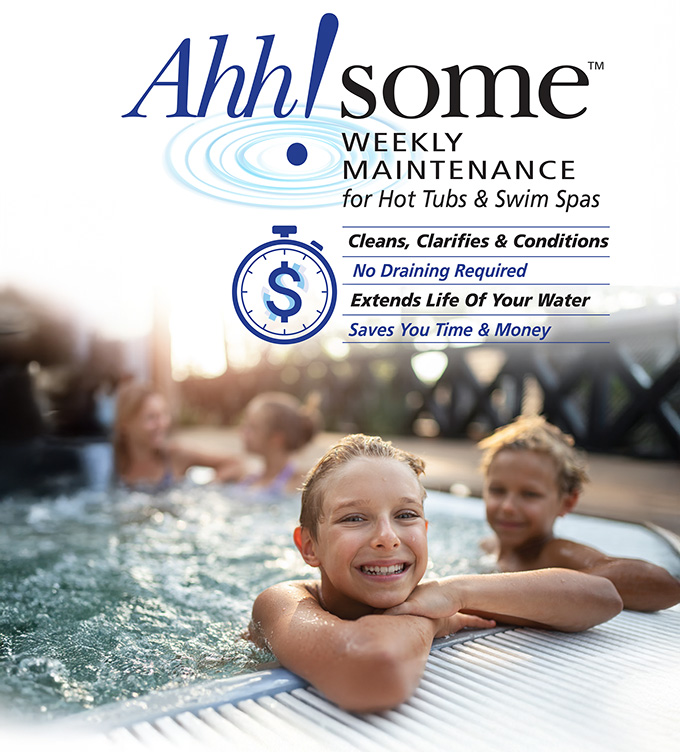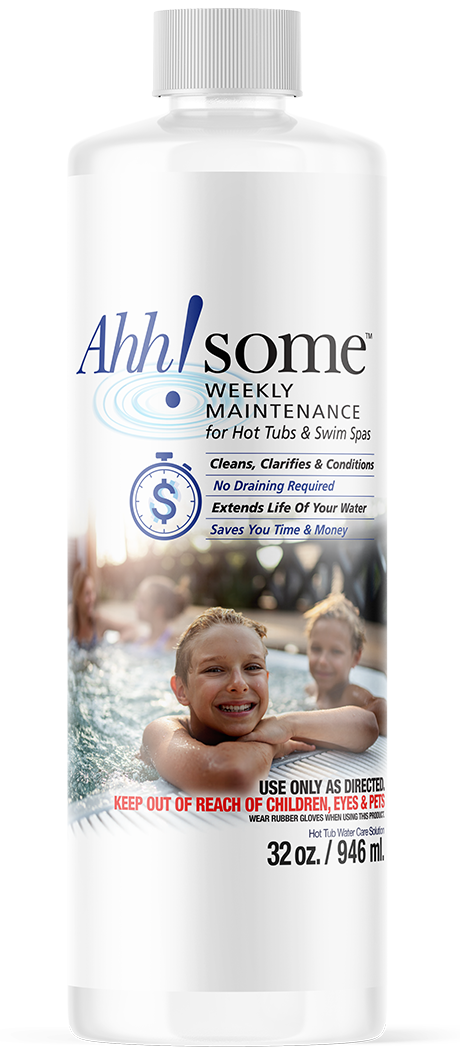The Magic of Science in every bottle
Ahhsome Weekly Maintenance Program
The Ahh-some Weekly Maintenance program is an All-in-One Spa Cleaner and serves as a dual-purpose product for your hot tub or swim spa. Ahh-some Weekly Maintenance is available in a 32 oz bottle. There is no longer any need to mix the concentrate with water, it is ready to use right out of the bottle. When used as directed, Ahh-some Weekly Maintenance removes the build-up of bio-fouling inorganics, oils, lotions, cosmetics, exfoliated skin and other contaminants from the plumbing, jets, and shell of typical hot tubs.
By using Ahh-some Weekly Maintenance, your hot tub maintenance protocol will become the easiest you’ve ever thought possible. If your hot tub plumbing has never been bio-cleaned using an effective “purge” or a “purge” has not been performed on a regular basis, we recommend that this be done prior to using our Weekly Maintenance program.

Here is a laundry list of the benefits of using Weekly Maintenance:

Talk about Savings!
Ahh-some Weekly Maintenance in the 32 oz bottle is designed to last you approximately 16 weeks (based on a 375 to 400 gallon hot tub). We recommend 1 oz per 200 gallons however your rate might differ slightly based on your water. Be advised that you may need to use slightly LESS weekly maintenance or slightly MORE depending on your water. We recommend starting with the required dose and then adjusting from there after a few weeks of use.
Click here to Learn the History Of Weekly Maintenance
For further information and questions please visit our Weekly Maintenance FAQ page.
For detailed instructions and further information, please read our Weekly Maintenance Concentrate Instruction Booklet. This booklet also comes with the product at time of purchase.
For hot tub water clarity beyond anything you have ever witnessed, buy Weekly Maintenance TODAY!

